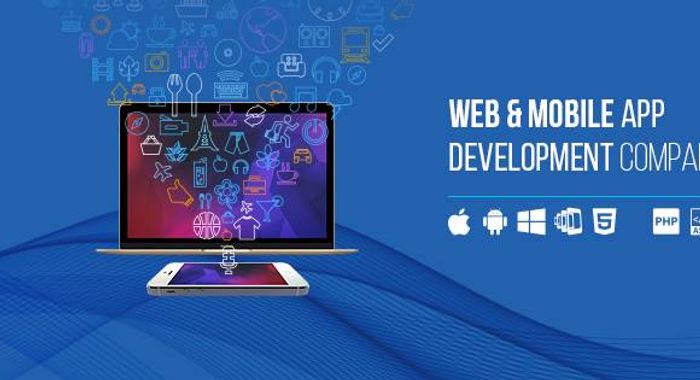Top 10 Web Development Best Practices for a Successful Website
You need to adhere to web development best practices as you design, develop and launch your website. Stick to these web development best practices and chances are good that your users will stick around.
As an online entrepreneur, you want to make sure that your website meets the needs of your target audience. Otherwise, your customers won’t stay on your site long enough to see what you have to offer or make a purchase. In order to make sure that your website meets these needs, you need to adhere to web development best practices as you design, develop and launch your website.
Here are the top 10 web development best practices for a successful website.
1. Start By Planning
You can’t build an airplane or skyscraper without some form of planning, so why would you want to start building your website with no plan in place? You won’t have a blueprint to work from. You won’t know how long it will take or how much it will cost. But these are all things you must have if you want your website to be successful.
To make sure that happens, start by planning out every step of your process and develop checklists that help ensure everything gets done. By taking time to plan out every detail and make sure nothing is forgotten, you’ll avoid costly mistakes later on down the road.
2. Create Strong CTAs
Because they're so high-impact, Call-to-Action buttons should be an important part of your design. CTAs should be visually strong and easy to find. They should fit in with your website's color scheme, or at least be easily recognizable as something that visitors can click on if they want to learn more about your products or services.
In addition, you can improve conversions by adding a visual element (like highlighting words), and making sure that CTAs are above the fold so that users don't have to scroll past them to get at other content on your site.
3. Fast Loading Time
One of the biggest drawbacks of slow loading time is that users will leave your site if it takes too long to load. This can happen regardless of whether or not they are willing to wait. The reason is that when they click on your website, they expect things to move smoothly. If something doesn’t happen right away, it will annoy them and lead them to think there is a problem with your site.
Some users have no patience at all and won’t hesitate to hit back on their browser in an attempt to find another website that works better than yours does. It goes without saying that being closed down before you even get started isn’t good for business!
4. SEO (Search Engine Optimization)
SEO is an abbreviation for Search Engine Optimization. SEO is a component of Search Engine Marketing (SEM). The term generally refers to on-page optimization, which deals with writing content in such a way that it contains keywords used by search engines to find web pages.
Keywords should be targeted towards users and be included as often as possible while still maintaining readability and relevance. Some other aspects of search engine optimization include obtaining links from websites (link building) and providing your content in different formats (including video, infographics, etc.).
5. Visual Hierarchy
Visual hierarchy, or how users perceive content on your site, can go a long way toward determining whether your message is effectively conveyed. The more immediate and obvious certain elements are on your site (the visual hierarchy), you better people will understand how to navigate it.
Do everything you can to make sure that primary calls-to-action, such as call us, download now, or sign up are clear and placed immediately above other sections of text or images in an area of high visual importance. If you have secondary calls-to-action they should still be visually apparent but not as urgent.
6. Mobile Friendly
Mobile Friendliness is important because more and more people are using their mobile devices to access the internet. Optimizing a website with responsive design ensures that everyone has the best experience. Here are some tips and tricks about web development best practices that can help you build an app: Separate Mobile Specific Layouts & Coding, Always use semantic tags for meaningful content, Minimize HTML elements, Clearly defined heading structure (H1 - H6), CSS Sprites to reduce HTTP requests, Minimize JavaScript files, Combine and compress CSS and JS files separately, Load JS at end of body tag after all content loaded in body of page.
7. Easy Navigation
An important part of creating an excellent user experience is enabling users to quickly find what they need. It’s important to have clear categories and headings on your website, so people can move through your site with ease. The visual weight of each element should be relative to its importance; simple designs are often more efficient than complex ones. Regardless of how great your site is, if it’s hard to navigate or difficult to use, you can count on frustrating and alienating some percentage of your audience.
Suggested Read: Websites For Sending Gifts From India To USA
8. Quality Images
If your photos are grainy or simply look unnatural, viewers won’t connect with them and they won’t share your content. Make sure that you have crisp, high-quality images. You can go as far as photographing them yourself with a DSLR camera—after all, it is worth it to create amazing content! Your goal is to make viewers fall in love with your brand, product or service—and beautiful imagery is how you do that.
Whatever photos you decide to use on your website, they should be edited so that they look their best. If you don’t feel comfortable doing so yourself (or have anyone else on staff who can), try out photo editing software like Photoshop Elements for PC or iPhoto for Macs.
Also Read:- Top Web App Development Companies in India For 2024
9. User-Centric Design
As with any design work, you should make sure that your website is user-centric. Before even starting to build, it’s important to get feedback on your proposed idea. You can do in-person interviews or even launch a survey using SurveyMonkey or Google Forms. Even talking to yourself out loud while looking at screenshots of other websites will help you come up with fresh ideas and opinions on how to improve your own design.
Remember: People are visiting your site because they want something from you. It’s important that their experience be seamless, enjoyable and easy to navigate so they have no trouble accomplishing what they set out to do in the first place! How many times have you been frustrated by not being able to find what you were looking for on a website?
10. Keep it Simple and Clear
Your site’s most important asset is its visitors, and they don’t want to spend more time than necessary on your site. Additionally, don’t over-complicate things because some of your visitors may be less tech-savvy than others. In general, keep things simple and clear – it will pay off in more time spent on your site and a better user experience.
For example, if you need to ask users to sign up before reading an article, provide one page with clearly labeled buttons that are easy to see (even for those using mobile devices). If you want users to leave feedback about an experience or product, make sure it is easy to understand how and where they can do so by putting instructions right next to input fields.
Conclusion
Whether you’re building an e-commerce site, social network, or anything else, you want to design your website in such a way that it is user-friendly and easy to navigate. Stick to these web development best practices and chances are good that your users will stick around. The more time they spend on your site—and ideally engaging with it—the more successful your project will be. For a successful website, it is necessary to hire a software developer who follows best practices in web development. Have any other tips? Share them in the comments below!

